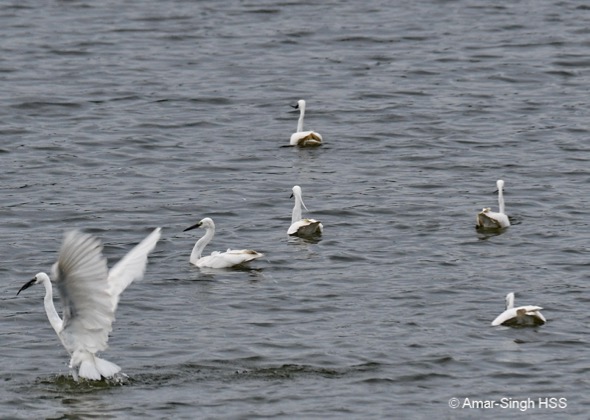- Feeding Frenzy Ecology Center
- Feeding Frenzy Ecology Center
- Feeding Frenzy Download
- Feeding Frenzy Ecology Definition
- Feeding Frenzy 2 Free Download

In ecology, a feeding frenzy is a situation where oversaturation. Of a supply of food leads to rapid feeding by predatory animals. For example, a large school of fish can cause nearby sharks to enter a feeding frenzy. This can cause the sharks to go wild, biting anything that moves, including each other or anything else within biting range. In ecology, a feeding frenzy occurs when predators are overwhelmed by the amount of prey available. For example, a large school of fish can cause nearby sharks, such as the lemon shark, to enter into a feeding frenzy. This can cause the sharks to go wild, biting anything that moves, including each o.
Assessment | Biopsychology | Comparative |Cognitive | Developmental | Language | Individual differences |Personality | Philosophy | Social |
Methods | Statistics |Clinical | Educational | Industrial |Professional items |World psychology |
Animals · Animal ethology · Comparative psychology ·Animal models · Outline ·Index
Feeding Frenzy Ecology Center
| This article seems to be biased or has no references. You can help the Psychology Wiki by citing appropriate references. Please see the relevant discussion on the talk page. |
In ecology, a feeding frenzy is a situation where oversaturation[vague]
ReferencesEdit
| Swarming | ||
|---|---|---|
| Swarm algorithms | 140px | |
| Biological swarming |
| |
| Animal migration |
| |
| Swarm robotics |
| |
| Related topics | ||
| This page uses Creative Commons Licensed content from Wikipedia (view authors). |
Feeding Frenzy Ecology Center
Every plant and animal species, no matter how big or small, depends to some extent on another plant or animal species for its survival. It could be bees taking pollen from a flower, photosynthesis of plants, deer eating shrub leaves or lions eating the deer.A food chain shows how energy is transferred from one living organism to another via food. It is important for us to understand how the food chain works so that we know what are the important living organisms that make up the food chain and how the ecology is balanced.
Photosynthesis is only the beginning of the food chain. There are many types of animals that will eat the products of the photosynthesis process. Examples are deer eating shrub leaves, rabbits eating carrots, or worms eating grass. When these animals eat these plant products, food energy and organic compounds are transferred from the plants to the animals.
Feeding Frenzy Download
Food Chains and Food WebsFeeding Frenzy Ecology Definition
In the living world, every form of life is food for another. Food chains and webs show how food and energy are passed between species.Food Chain
A food chain is a food pathway that links different species in a community. In a food chain, energy and nutrients are passed from one organism to another. Food Chains rarely contain more than six species because amount of energy passed on diminishes at each stage, or trophic level. The longest chains usually involve aquatic animals.
In a food chain, an animal passes on only about 10 percent of the energy it receives. The rest is used up in maintaining its body, or in movement, or it escapes as heat. The amount of available energy decreases at every trophic level, and each level supports fewer individuals than the one before. This results in a pyramid of numbers with many organisms at the bottom and few at the top.
Food Web
A community of living things may contain hundreds or even thousands of different species. Each species is usually involved in several different food chains. Therefore, different food chains often interconnect to form a large network, called a food web. Even in a small ecosystem, such as a pond, food webs can be extremely complicated.
Feeding Frenzy 2 Free Download
ConsumersConsumers are heterotrophs, or living things that cannot make food for themselves. They survive by taking in good that has been made by other living things. A food chain contains several kinds of consumers, each of which occupies a different trophic level.
* Primary consumers eat producers
* Secondary consumers eat primary consumers
* Tertiary consumers eat secondary consumers and so on…
Humans make a large impact on the natural food web. Humans are everywhere and their populations are going over the top, such a population needs a large amount of food. Since people are people, we grab some much that we don't even need. For example, when fishing instead of simply catching a few hundred fish. They drag the nets on the bottom of the sea floor, this causes thousands of fish, and crustaceans to get caught on the net. All the fish that is not what their looking is thrown back, but by then the fish are usually dead.
I would join Chris Douglas and animal experts as they attempt to break new ground. Using a 700-pound glass cube, watch as they observe feeding patterns, predatory instincts, and how at any turn they could become a meal to a lion or a grizzly bear. Like anything I fear, I would think of everything that could go wrong and end up having a terrible time, instead of taking it all in as an awesome experience.